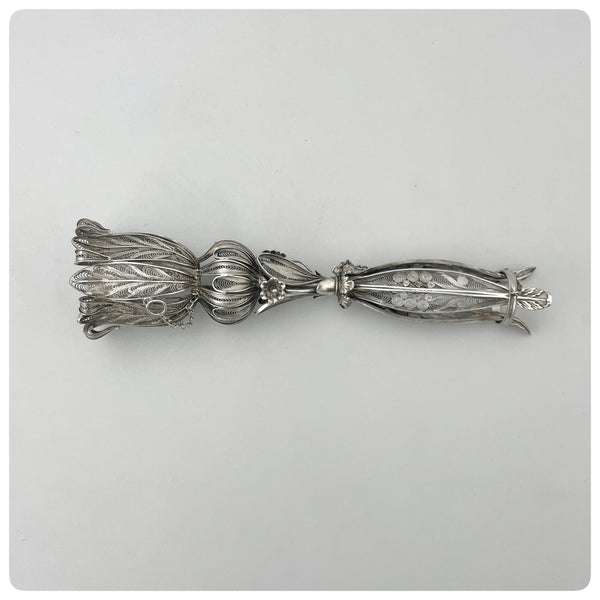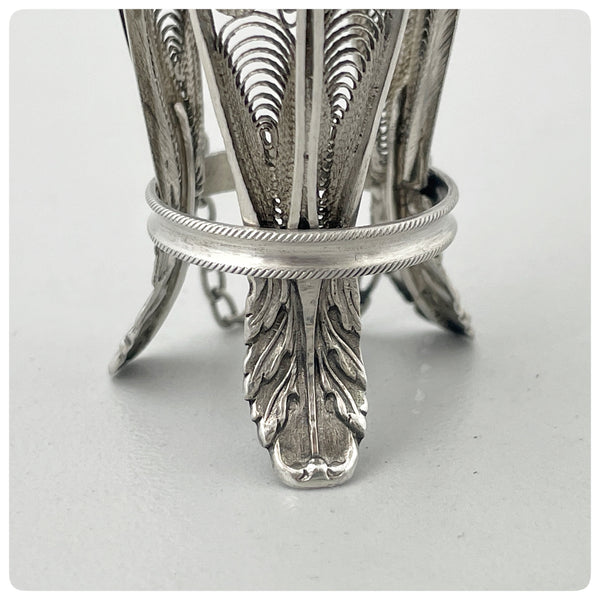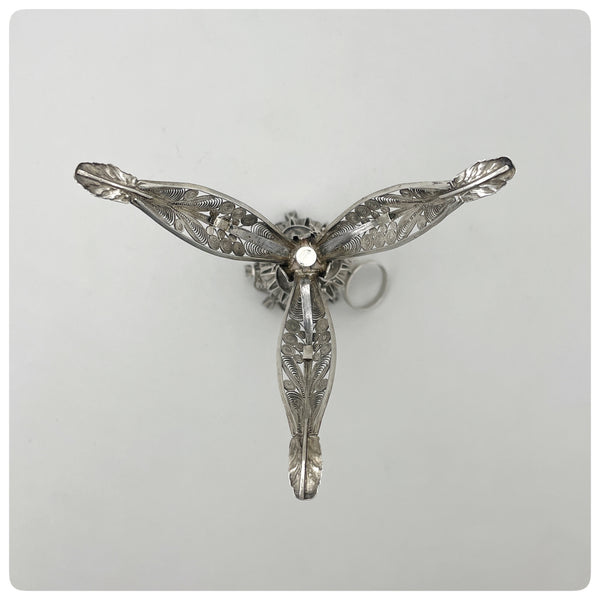Continental Solid Silver Filigree Tussie Mussie, Mid 19th Century
The origins of the tussie mussie occurred in the medieval times. The portable floral arrangement was meant to keep the nose happy or gay. It arrived in this country with the colonists, who referred to them as tussie mussies. The English preferred the term of nosegay. Queen Victoria's reign popularized tussie mussies as messengers of affection. Each sprig of aromatic herbs or flowers was chosen for its meaning according to the language of flowers. According to the Society of American Florists, the following flowers communicate the following meanings:
Amaryllis – dramatic
Apple Blossom – promise
Azalea – abundance
Baby’s Breath – festivity
Black Eyed Susan – encouragement
Camellia – graciousness
Daffodil – chivalry
Daisy – innocence
Gardenia – joy
Heather – solitude
Hibiscus – delicate beauty
Hyacinth – sincerity
Hydrangea – perseverance
Iris – inspiration
Ivy – fidelity
Jasmine – grace and elegance
Lily (Stargazer) - ambition
Marigold – desire for riches
Orange Blossom - fertility
Orchid – delicate beauty
Pansy – loving thoughts
Peony - healing
Rose (Red) – passionate love
Snapdragon - presumptuous
Sunflower - adoration
Sweet Pea - shyness
Violet - faithfulness
Wisteria - steadfastness
The removal of the ring at the pinnacle of the cone liberates three legs, allowing the arrangement to be displayed on a table top.
6 1/4" length. 1 1/4" top diameter. 1.93 troy ounces.

















